Unsung hero: William T. Green, lawyer and activist, author of the state's first civil rights law9/8/2021 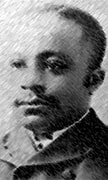 Green Green By Gretchen Schuldt Fewer than 30 years had passed since the end of the Civil War when Canadian-born William T. Green graduated from the University of Wisconsin Law School in 1892, one of the first Black people to do so. He was by then 31 or 32 years old. Law degree in hand, he settled in Milwaukee, where he became the city's first and only Black attorney. By that time, he already had authored the state's first civil rights bill. Green's enrollment in law school was fortuitous, according to a September 1893 Milwaukee Journal newspaper story. The short, one paragraph account announced a benefit for Green, "a colored lawyer of the city, who was stricken with paralysis some time ago." "Years ago he was an errand boy in Milwaukee, but later obtained a position about the state university building," the newspaper reported. "He was without money and although eager to learn was unable to provide himself with an education. One of the professors one day found him with his ear to the keyhole listening to a law lecture. Attracted by the lad's earnestness to learn the professor helped him through college and he graduated a year or two ago with high honors." Green, as a young man, watched as the country moved away from its commitment to civil rights. In 1883, the U.S. Supreme Court struck down a federal law prohibiting discrimination in public accommodations. The move had ramifications in Wisconsin. Black people were turned away from taverns and other public places; some attending a teachers' convention in Madison were not allowed to register at hotels, according to the summer 1966 issue of the Wisconsin Magazine of History.
The small Black population (304 people in 1880) began pushing for a state law that would do what federal law no longer did. Then in 1889, Owen Howell, a Black man, bought a ticket to a play. When he went to the Bijou Opera House in Milwaukee, he was denied his seat and an usher instead directed him to the gallery. Howell sued in Milwaukee County Circuit Court. Black leaders in the city, including Green, held a convention to show off their increasing political strength – the city's Black population was by then about 449 – and to push for a new civil rights league, which was indeed established. Green also helped organize a meeting to censure the Bijou's owner. The meeting drew about 75 people – about 17% of the city's Black population. Howell won his case and was awarded $100 and costs. Law student Green, meanwhile, was busy with his civil rights bill. It was drafted in late 1889, and introduced in January 1891 by a one-term legislator, Orren T. Williams. Republicans at the time were the advocates for civil rights. They also were in the legislative minority that term. The bill would have provided equal access to a variety of public accommodations, including restaurants, saloons, barber shops, theaters, and transportation conveyances. Violations would be punishable by fines of $25 to $500 and incarceration for up to one year. The debate in the Judiciary Committee was overtly racist. "Where is the man on this floor who will say the colored man is the equal of the white man?" Assemblyman John Winans asked. "God did not create them equal." First the bill was watered down. Then it was defeated. "Mr. Williams, who introduced it, wanted it killed because it had been limited to hotels and common carriers," The Milwaukee Journal reported.
0 Comments
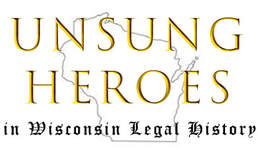 By Margo Kirchner Chief Buffalo was instrumental in the transfer of approximately one-third of Wisconsin from Indigenous Americans to the United States while retaining his people’s rights to live on reserved land and to hunt, fish, and gather. Chief Buffalo (also known as Great Buffalo, Kechewaishke, Gitchi waisky, or Pezheke) negotiated and signed a series of land-cession treaties between the Lake Superior Anishinaabe (also known as the Chippewa or Ojibwe) and the United States between 1837 and 1854. By the mid-1800s, Chief Buffalo was chief of all Lake Superior Anishinaabe and their lead treaty negotiator. He is best known for ensuring that the Anishinaabe would stay on their lands, even if those lands were significantly reduced in size, rather than move west of the Mississippi River. His work shaped the map of Wisconsin today, as the treaties he signed passed most of northern Wisconsin into United States control and eventually to White landowners. Chief Buffalo pursued a peaceful resolution despite treachery by the U.S. government that left about 400 Anishinaabe dead. While one could argue that the Anishinaabe relinquished too much in the treaties, Rob Goslin, a tribal elder of the Red Cliff Band of Anishinaabe and a historical interpreter for the Madeline Island Museum, confirms Chief Buffalo’s favorable place in his people’s history. Goslin says that Chief Buffalo knew changes were occurring as traders and settlers moved into northern Wisconsin, and he saw the issue as how to live among the new settlers rather than how to fight their presence. Goslin points to a saying he uses as a tribal elder and historical interpreter, which sums up Chief Buffalo’s thinking: “Teaching stays the same but the culture we live in changes.” When changes occur, “we have to live as we are today,” he says, and that was Chief Buffalo’s position. Chief Buffalo did the best he could with the situation before him, says Goslin. “He did his very best to look in the interest of his people.” Born in or about 1749 at La Pointe on Madeline Island (one of the Apostle Islands in southwestern Lake Superior), Chief Buffalo was a member of the Loon Clan, from which the highest-level chieftains of the Lake Superior Anishinaabe were chosen. Chief Buffalo rose to become what Goslin calls the “first chief” or “ultimate chief.” Several sources reference Chief Buffalo’s skill as a negotiator. An obituary of Chief Buffalo remarked that he was “noted for his rare integrity, wisdom in council, power as an orator, and magnanimity as a warrior.” Anishinaabe government was based on consensus, says Goslin, so Chief Buffalo had to discuss and mediate issues with the other clans’ chiefs as well as with the United States. The Minnesota chiefs in particular did not always agree with him. But in treaty negotiations, Chief Buffalo ultimately led the discussions. “He was a talker,” Goslin says. The Anishinaabe lived by hunting and trapping; fishing in Lake Superior, other lakes, and streams; gathering wild rice; and tapping maple trees for syrup. As European fur traders arrived in what is now northern Wisconsin, Michigan’s Upper Peninsula, and Minnesota, the Anishinaabe traded and intermarried with them. While other Anishinaabe tribal leaders urged physical aggression to resist the United States’ land acquisitions, Chief Buffalo relied on nonviolent negotiations and advocated for peace. Goslin says “that was one of the unique things about him—he was against bloodshed.” In the 1837 Treaty with the Chippewas, signed at St. Peters in Minnesota, and the 1842 Treaty with the Chippewas, signed at La Pointe, the Anishinaabe ceded land in eastern Minnesota, northern Wisconsin, and the western Upper Peninsula of Michigan. The portion of ceded land in Wisconsin alone totaled more than 22,000 square miles. In exchange, the Anishinaabe received certain sums to pay debts plus annual payments in cash and supplies for 20 (1837 treaty) and 25 (1842 treaty) years. The Anishinaabe retained their rights to hunt, fish, and gather on the ceded land, rivers, and lakes. Chief Buffalo participated in the 1837 and 1842 treaty negotiations and signed both treaties as chief of the La Pointe band of Anishinaabe. Historical reports indicate that the Anishinaabe believed they had sold only rights to timber and copper rather than the land itself, permanently. Ronald N. Satz, in Chippewa Treaty Rights: The Reserved Rights of Wisconsin’s Chippewa Indians in Historical Perspective, cites evidence that the acting superintendent of Indian affairs for the area assured the chiefs at the treaty council that they would not be asked to leave ceded lands for many years as long as they were peaceful and well-behaved. In a letter to the commissioner of Indian affairs in 1850, Chief Buffalo and other Anishinaabe chiefs recalled that during negotiations for the 1842 treaty, government officials said that the United States wanted the mineral rights to the land, not to settle it, and that the Anishinaabe would be able to live on their lands for 50 or even 100 years. They believed that although they had ceded their lands, they could remain living, hunting, and fishing there. United States officials thought otherwise. A new administration in the White House in 1845 brought a new commissioner of Indian affairs who wanted to move the Anishinaabe and others to a northern “Indian colony” to assist in westward expansion. As noted by Richard D. Cornell in The Chippewa: Biography of a Wisconsin Waterway, the commissioner also suggested evicting the Anishinaabe from northern Wisconsin to promote their “civilization.” The situation became dire in February 1850, when President Zachary Taylor revoked all hunting and fishing rights in the ceded territory and ordered the Anishinaabe to move from their lands around Lake Superior to west of the Mississippi River. Such removal would have taken the Anishinaabe away from their homelands and placed them in close proximity to the Dakota (also known as the Sioux), with whom the Anishinaabe had conflicted for more than a century. Chief Buffalo and other chiefs opposed to removal sent messengers to villages throughout their lands to confirm that the Anishinaabe had committed no incidents of aggression against White communities that could have justified removal. To push the Anishinaabe west, a Bureau of Indian Affairs agent and the territorial governor of Minnesota moved the location of the annual treaty payments of cash and supplies from La Pointe, Wisconsin, to Sandy Lake, Minnesota, and set the delivery for October 1850. The officials required all Anishinaabe families to appear to receive the payments, hoping to lure them to Minnesota and strand them there for the winter and possibly permanently. At least 3,000 Anishinaabe traveled hundreds of miles westward to Sandy Lake for the annuity payment. But when they arrived they found rancid and inadequate food, few supplies, and no cash payments. The Anishinaabe suffered six weeks of hunger and terrible conditions waiting for the annuity payments (which never arrived) before walking home, as winter had set in and rivers had frozen. About 170 Anishinaabe died at Sandy Lake from disease and starvation and another 230 died on the journey home. In November 1851 Chief Buffalo and several other Anishinaabe chiefs and headmen wrote to the commissioner of Indian affairs complaining of the acts of the Indian agent in Wisconsin as a “great deception towards us,” describing the suffering at Sandy Lake, asking that future annuity payments be made at La Pointe, and asking permission to send a delegation to Washington, D.C.
Receiving no response to the request, in spring 1852, at age 93, Chief Buffalo set out to negotiate in person with U.S. President Millard Fillmore. (Taylor died in July 1850.) The party had not received permission for the journey from Washington officials, which was legally required at the time. Chief Buffalo, another leader named Oshoga, and four other Anishinaabe chiefs or braves, accompanied by translator Benjamin Armstrong (a White man who had married into Chief Buffalo’s family), traveled from La Pointe across Lake Superior in birchbark canoes. Along the way, they stopped at settlements and obtained petitions of support from the White community. When the party reached Sault St. Marie, Michigan, government officials tried to block their travel, saying Indians were not allowed to pass that point without permission from Washington. However, Chief Buffalo and his delegation persuaded the officials to let them pass. They traveled by steamer to Detroit, where another government official tried to hold them up. Undeterred, the party traveled by steamer to Buffalo, then by train and steamer to New York City and Washington. Unsung hero: Lavinia Goodell, Wisconsin's first woman lawyer and an advocate for equal rights8/2/2021
By Colleen Ball Lavinia Goodell, Wisconsin’s first woman lawyer, is mostly known for her epic battle with Chief Justice Edward Ryan. In 1875, he denied her admission to practice before the Wisconsin Supreme Court solely because of her gender. According to Ryan: The law of nature destines and qualifies the female sex for the bearing and nurture of the children of our race and for the custody of the homes of the world and their maintenance in love and honor. And all life-long callings of women, inconsistent with these radical and sacred duties of their sex, as is the profession of law, are departures from the order of nature; and when voluntary, treason against it. Chief Justice Ryan crossed swords with the wrong woman. Goodell assailed his decision in the national press. She drafted a bill to prohibit gender discrimination in the practice of law, persuaded male legislators to pass it, and a male governor to sign it. Her triumph opened the Wisconsin bar to women, but her many other impressive feats are scarcely known. She was born to abolitionist parents who were so passionate about equal rights that their dishes were inscribed with the Declaration of Independence. Goodell later recalled: When I sat down to dinner every day I read my plate, till I had learned it all by heart—learned it so well I never forgot it. And thus literally with my child’s bowl of bread and milk I drank in also the question of equal rights . . . As a young woman, Goodell promoted equal rights by helping her father publish The Principia, an anti-slavery newspaper in New York. When he was away on business, she was the managing editor. After the North won the Civil War, she landed a job at Harper’s Bazaar, America’s first fashion magazine, where she honed her skills as a writer and editor, rubbed shoulders with progressive New Yorkers, and came to regard herself as a professional woman, rather than a potential wife and mother. In 1871, her parents, then in their 70s, moved to Janesville, Wisconsin. Goodell followed to care for them. She was dismayed to find that, unlike her New York friends, Janesville women had “ballot phobia.” They refused to support the women’s suffrage movement for fear of appearing “unwomanly.” To her they seemed “content with their degradation.” Goodell would not stand idly by. While managing her parents’ health and home, she championed equal rights for women. She started writing for the Woman’s Journal, the leading suffragist periodical published by Lucy Stone and her husband, Henry Browne Blackwell. She published dozens of articles arguing that woman should have the right to vote, equality in marriage, the right to own property, the right to enter professions, and so on. She also decided to become an attorney. She studied law on her own while informally apprenticing for the firm of Pliny & Norcross and pushed to be admitted to the bar. In those days, bar exams were conducted orally in a courtroom by a judge and senior lawyers. Rock County Circuit Court Judge Harmon Conger knew that no woman had been admitted to the bar in Wisconsin. Lavinia’s admission would be controversial, so he kept postponing her exam until he no longer could. On June 17, 1874, Judge Conger had to examine a young man who wanted to practice law. Late in the day he “suddenly and unexpectedly” summoned Goodell to be examined at the same time. The questioning was “awful severe,” but Goodell not only passed, she upstaged the male candidate. Her admission as the first woman lawyer in Wisconsin created a sensation in Janesville and the national press. She immediately ordered business cards. 1n 1874, only a handful of women in the United States were lawyers. Several took the bar exam just to prove that they could pass it, but they did not practice law. Not Goodell. She used her law license to advance her causes in court and lobby for changes in the law. One of those causes was temperance, because drunk men abused, neglected, and impoverished their wives and children. Shortly after passing the bar, Goodell learned that Fort Atkinson saloon keepers were illegally selling liquor on Sundays and the male district attorney refused to prosecute them. Local temperance leaders thought the new lady lawyer might be up to the task. Indeed, she was. On August 4, 1874, Wisconsin’s first woman lawyer won her first two court trials back-to-back. The saloonkeepers immediately appealed to the Jefferson County Circuit Court where they would be tried by a jury of their peers--i.e., men. (Women couldn’t yet serve on juries). Big mistake. Goodell was smart and on a mission. She prepared long and hard. On September 17, 1874, she prevailed in her first jury trial. This marked the first time any woman tried a case to a jury in Wisconsin and even in the United States. Goodell proceeded to try many cases. Among the most noteworthy was Tyler v. Burrington, where she defended a middle-aged widow on a claim against her deceased husband’s estate. When the case reached the Wisconsin Supreme Court, Chief Justice Ryan issued his famously misogynous opinion (noted above) denying her admission to practice due to her gender, which only motivated her to lobby for a change in the law. Meanwhile, she kept litigating in the circuit courts. Women who had grounds for divorce couldn’t find male lawyers to represent them. Goodell took their cases. She also developed a knack for criminal defense work. While visiting a client in jail she felt another calling. The awful conditions were only breeding more vice. She established school and prayer services in the Rock County Jail with the goal of rehabilitating inmates so that they could be productive members of society upon their release. She toured what is now Waupun Correctional Institution and proposed penal reform legislation to the Wisconsin legislature. Goodell smashed so many barriers. She became Wisconsin’s first female notary, which gave her and eventually other women a respectable source of income. She was the first woman in the United States to run for city attorney. She received 60 (male) votes. After she successfully lobbied the legislature and governor to allow women to practice law, she was finally admitted to practice before the Wisconsin Supreme Court. Then she became the first woman to win a case there. She also co-founded Wisconsin’s first female law firm—Goodell & King. Along the way, Goodell circulated Elizabeth Cady Stanton’s suffrage petitions around Janesville, co-founded the Janesville women’s temperance association, served as vice president of the Society for the Advancement of Women, and vice president of the American Women’s Association. She was Wisconsin’s signatory to the 1878 Susan B. Anthony Amendment, which the U.S. Congress ultimately passed in 1920 as the 19th Amendment granting women the right to vote.
The list goes on even though Goodell practiced law just six years and spent the last three of them battling ovarian cancer, which took her life at age 41. She did not smash barriers for the glory of it. She did it because she believed that women had as much right to social, civil, and political equality as anyone else. She shrewdly persuaded influential male lawyers, judges, and politicians to her point of view, which then opened doors for women. Yes, she blazed trails. Just as important, she inspired and actively helped others to venture onto them. Learn more about Lavinia Goodell by visiting www.laviniagoodell.com or taking this walking tour of her Janesville stomping grounds. Please help us identify people and events that deserve more recognition for their place in Wisconsin’s legal history. You can send as much information as you want, but at minimum we need: -The name of the person / identity or name of event -A picture, if available -A brief description of the person or event and the person or event’s impact on Wisconsin law or legal history -Where we can find out more about the person or event Please send the information to gretchen@wjiinc.org or mail it to WJI, P.O. Box 100705, Milwaukee, WI 53210 Thank you! This project is supported by: Unsung legal heroes: Kathleen Rose Harney and Joan Kessler; assistance from Ruth Bader Ginsburg7/19/2021
By Gretchen Schuldt When Kathleen Rose Harney married Joseph Michael Kruzel in 1971, she kept using her own name. And there the trouble began. Her employer, Milwaukee Public Schools – Harney was a first-year art teacher – told her that she either had to use her husband's name or go to court and legally change her name to "Harney" if she wanted to add Joseph Kruzel to her health insurance policy. The marriage, after all, meant that her name was no longer hers, according to her employer. MPS was not alone in that belief. Harney's wedding announcement in The Milwaukee Journal referred to her as "Mrs. Joseph Michael Kruzel" and the "former Miss Kathleen Rose Harney." Even Harney herself believed she gave up her name. "I didn't really want to," she said in an interview. "I thought you had to." Harney went to court. She appeared before Milwaukee County Circuit Judge Ralph J. Podell in December 1972 and asked the judge for permission to use the name that was hers since birth and that she had used on her marriage certificate. Technically, she asked to "change" her name from one she had never even used. "That's when things snowballed," said Harney, who now lives in Wauwatosa. She was called to the stand during the hearing she thought would be routine. "All they asked is, 'What's your name and are you pregnant?'" she said. Then the judge told her to sit down, she said, and the men in the room discussed what her name should be. The judge denied her request for the good of any future children she might have. Having parents with different names would be bad for the young ones, he said. If two people getting married can't agree on a single name, he said, "it would be better for them, any children they may have, and society in general that they do not enter into the marriage relationship." Podell also said that he "feels very strongly that family unity also requires that all members thereof bear the same legal name" and "this court feels she should carry her husband's name." Harney said her lawyer told the judge he rather agreed with him. The February 1973 ruling made the newspapers. "Maiden Name Plea Rejected By Court," the Journal reported. "My in-laws saw it in the paper," Harney said. "It didn't go over well." It took a while for her in-laws to speak to her again, she said. Attorney Priscilla Ruth MacDougall, who specialized in women's issues, found out about the ruling and contacted Harney. The naming precedent was bad and should not stand, MacDougall said. Would Harney consider an appeal? "We just got married and we're buying furniture," Harney, then 22, told her. "We can't afford an attorney." MacDougall said she and others would find the money. Harney appealed; the state Supreme Court accepted the case. Harney's appellate lawyer was a rookie attorney named Joan Kessler, who took the case pro bono. "I was just young and out of school and what did I know?" said Kessler, who would later serve as U.S. attorney for the Eastern District of Wisconsin and a state appeals court judge. "Everyone was astounded" at Podell's decision," she said. It already was clear that a person's name was a matter of choice, she said. There simply was no law on the books requiring a woman to take her husband's name. Kessler drafted a brief for the state Supreme Court. Since she was headed to New York for an American Bar Association meeting, she thought she would seek help from a more experienced lawyer – ACLU attorney Ruth Bader Ginsburg, who filed an amicus brief in Harney's support.* Ginsburg invited Kessler to her apartment. "I got to meet Ruth," Kessler said. Ginsburg read the younger lawyer's brief "while I was sitting there," Kessler said. Kessler liked a William Shakespeare quote that Ginsburg used in her ACLU brief. With Ginsburg's permission, Kessler used it in her own as well: "[H]e that filches from me my good name Robs me of that which not enriches him, And makes me poor indeed." "Why, as a condition of marriage," Kessler asked in her brief, "should this state compel one party to the marriage to exact from the other party so dear a price as one's own name? No rational answer suggests itself." Podell's lawyer, Bruce O'Neil, argued that Podell did not abuse his discretion in refusing to allow Harney to use her own name. He told the court that Podell's decision was "neither sexist nor chauvinist," the Journal reported. "It is submitted that whatever doubt may have existed in the trial court's mind vanished, when the appellant and her husband informed the court that, if they had children, they would give them surnames composed of a hyphenation of their two surnames," he said in his brief. "The trial court may well have asked what surnames they anticipated their grandchildren would bear, if one of their hyphenated children married the hyphenated child of two other parents bearing different legal surnames. And if they lived to see their great-grandchildren, they might well encounter a child listing under the burden of a hyphenated surname made up of eight different surnames." The court rejected O'Neil's arguments. Podell's points "could well be valid under proper circumstances, but only if proof were adduced to support the conclusions," Justice Nathan Heffernan wrote for the majority. "The reasons given for the denial of the change of name are completely conclusory and without any evidence of their applicability to the situation before the court....Unsupported generalizations do not constitute a cause shown to deny a change of name." The court also made a broader, more significant finding: "We conclude...that the common law in Wisconsin has never ossified to the point of a holding that a wife is required to take her husband's name. The implicit assumption is to the contrary." *The National Organization for Women joined with the ACLU to submit the brief. Also submitting an amicus brief on Harney's behalf were the University of Wisconsin Women Law Students' Association and the Olympia Brown League. Please help us identify people and events that deserve more recognition for their place in Wisconsin’s legal history. You can send as much information as you want, but at minimum we need: -The name of the person / identity or name of event -A picture, if available -A brief description of the person or event and the person or event’s impact on Wisconsin law or legal history -Where we can find out more about the person or event Please send the information to gretchen@wjiinc.org or mail it to WJI, P.O. Box 100705, Milwaukee, WI 53210 Thank you! The Unsung Heroes in Wisconsin Legal History is supported by grants from the Milwaukee Bar Association Foundation and the Wisconsin Law Foundation.
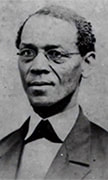 Gillespie Gillespie By Gretchen Schuldt (Updated 6/7/21 to correct Booth's biography.) Ezekiel Gillespie, born a slave, grew up to win the right to vote for Wisconsin's Black men. (All women would have to wait a while.) Gillespie may be one of the better-known unsung heroes in Wisconsin's legal history – he at least has a pocket park named after him – but his story seems especially timely now, as the Legislature works diligently to increase restrictions on who can vote and when. Gillespie was born a slave in Georgia. His mother also was enslaved and his father reportedly was their owner. Reports about how Gillespie got his freedom are contradictory, but he may have bought his freedom from his own father. State voters were asked in an 1849 constitutional referendum whether the voting franchise should be extended to African American men. There were numerous political offices up for a vote at the same time. The franchise referendum passed, 5,265 to 4,075, but a lot of voters who went to the polls didn't vote on the referendum question at all – they were more interested in other items on the ballot. Because the referendum did not receive a majority of all the votes cast that day, officials said, it failed. That is how the matter stayed until 1865, when Gillespie tried to register to vote in Milwaukee. Unsurprisingly, election officials turned him away, as did election officials when he showed up at the polls to vote. Gillespie sued the Milwaukee board of election inspectors. In anticipation of the suit, Gillespie already was working with Sherman Booth, an abolitionist and newspaper editor. Gillespie was represented by Byron Paine, a premier civil rights attorney of the time and a former (and future) State Supreme Court justice, who may have had his fees covered by Booth. Gillespie lost in Milwaukee County Circuit Court and appealed to the Supreme Court. D.G. Hooker, representing the election inspectors, argued that the constitution required that the suffrage measure, to be adopted, had to be approved by a majority of voters in the election, not just a majority voting on the referendum. "It is not reasonable to presume...that the convention intended to permit a change in the provisions of the constitution on so important a subject as the right of suffrage, and one which the convention knew would at that time have been particularly odious to a large majority of the people, without requiring that it should be approved, either by an actual majority of all the members of the legislature, or by an actual majority of the voters themselves," he argued. But the court disagreed. "Under the provisions of our constitution, as well as of other constitutions, persons are elected to a particular office who have a majority of the votes cast – not for the candidates for some other office, but for the candidates for that office...." Justice Jason Downer wrote for the three-member court. "To declare a measure or law adopted or defeated – not by the number of votes cast directly for or against it, but by the number cast for and against some other measure, or for the candidates for some office or offices not connected with the measure itself, would not only be out of the ordinary course of legislation, but, so far as we know, a thing unknown in the history of constitutional law." Please help us identify people and events that deserve more recognition for their place in Wisconsin’s legal history. You can send as much information as you want, but at minimum we need:
-The name of the person / identity or name of event -A picture, if available -A brief description of the person or event and the person or event’s impact on Wisconsin law or legal history -Where we can find out more about the person or event We are closing this phase of the project on Nov. 15. Please send the information to gretchen@wjiinc.org or mail it to WJI, P.O. Box 100705, Milwaukee, WI 53210 Thank you! By Margo Kirchner and Gretchen Schuldt WJI is launching a project to fill some of the holes of Wisconsin legal history. We're looking for the people and events that played significant but largely overlooked roles in the state's legal development. There are likely many holes that can be filled; we just don’t know about them yet because the people and events have been deleted or relegated to the background for decades or longer. Their stories need to be told so we have a more comprehensive view of Wisconsin legal history. This project was inspired by the absence of diversity in the four murals, completed in 1915, that hang in the State Supreme Court. They depict historic events and that's all well and good, but the only mural that includes people of color depicts a murder trial where the defendant is a Native American and the person being celebrated is a White male judge, one with a somewhat cloudy historical reputation. That particular mural, the only one that is actually about Wisconsin, represents territorial law by depicting the trial of Menominee Chief Oshkosh before federal judge James Doty in 1830. This mural shows Chief Oshkosh, other Menominees, and likely some Metis men (descendants of White French-Canadian men and Native American women) who were included in the jury. Chief Oshkosh and two other Menominees were tried for murder of a Pawnee who had accidentally killed a member of Oshkosh’s tribe. Under Menominee law, such a killing in retribution was permitted. According to the Wisconsin State Capitol Tour Narration guide, “[a]lthough the jury found Oshkosh guilty of murder, Doty ruled territorial law couldn’t be applied to this case because Oshkosh proved he had followed his legal system, tribal custom of law.” Nevertheless the actual decision was based at least in part on prejudice. "Knowing, as we do, that these laws were not enacted for the Indian, it appears to me that it would be tyrannical and unjust to declare him, by implication, a malicious offender against rules which the same laws presume he could not have previously known," Doty wrote. "He is not considered, in regard either to the general scope of government or of the laws, as an intelligent conscious being." Source: "James Duane Doty: Frontier Promoter," by Alice Elizabeth Smith. The other murals celebrate events that occurred in different times and places. *** The mural most prominent to someone sitting in the Supreme Court gallery depicts the signing of the U.S. Constitution in Philadelphia in 1787. All persons depicted in the painting (and likely at the event itself) are White men. *** This mural represents Roman law, showing Caesar Augustus Octavius presiding over the trial of a soldier; the scene depicts all White men. *** The final mural depicts the signing of the Magna Carta in 1215 by King John of England, surrounded by soldiers and noblemen, all of whom are White men or boys. There are a lot of people and historic events not recognized in the Supreme Court art. The murals are definitely a product of their time.
But it's a different time now. We want to hear about the great variety of people and events that shaped Wisconsin legal history. The people don’t have to be lawyers, but they must have played a significant role in advancing the cause of justice in Wisconsin. A plaintiff in a civil rights lawsuit could qualify, for example, or a defender of consumer rights, or someone who broke down a legal barrier so others could succeed. We also are looking for the significant events that brought about positive change in Wisconsin law or in Wisconsin’s legal system, whether those events occurred in or outside of a courtroom. White people, Black people, Brown people, men, women, children. Protests, court decisions, orations – let's hear about them! We will publish information about these folks and events on our blog; funding willing, WJI eventually will transform the information into a book and make it available to the public. We also have various events in mind to celebrate these unsung characters and occasions. Please help us identify people and events that deserve more recognition for their place in Wisconsin’s legal history. You can send as much information as you want, but at minimum we need: -The name of the person / identity or name of event -A picture, if available -A brief description of the person or event and the person or event’s impact on Wisconsin law or legal history -Where we can find out more about the person or event We are closing this phase of the project on Nov. 15. Please send the information to gretchen@wjiinc.org or mail it to WJI, P.O. Box 100705, Milwaukee, WI 53210 |
Donate
Help WJI advocate for justice in Wisconsin
|
Copyright © 2024 Wisconsin Justice Initiative Inc.
The Wisconsin Justice Initiative Inc. does not endorse candidates for political office. The Wisconsin Justice Initiative Inc. is a 501(c)3 organization.
The Wisconsin Justice Initiative Inc. does not endorse candidates for political office. The Wisconsin Justice Initiative Inc. is a 501(c)3 organization.

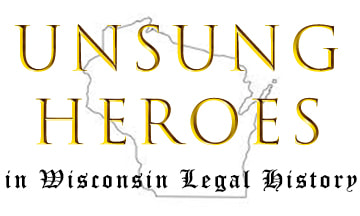
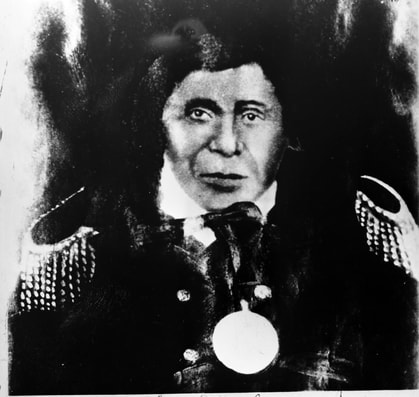
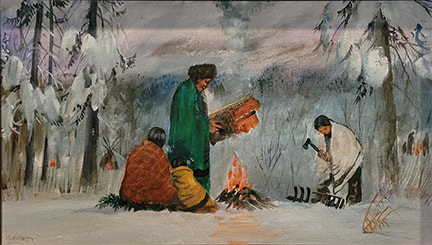
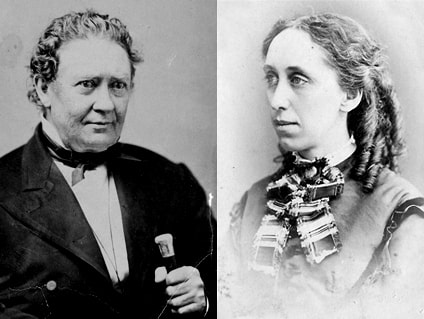
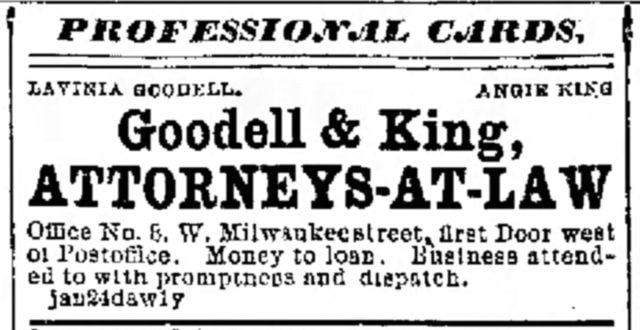

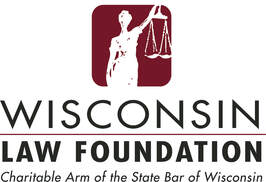
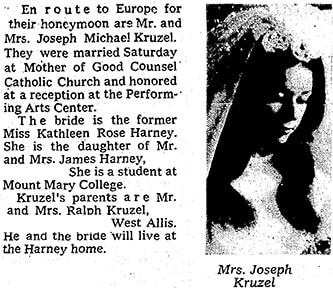
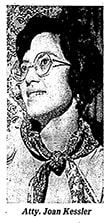


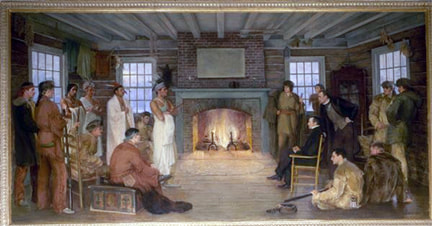
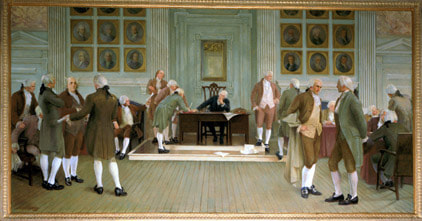
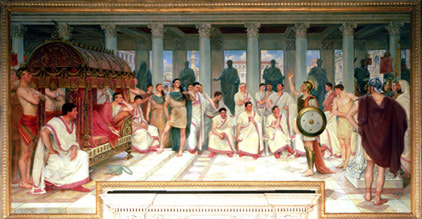
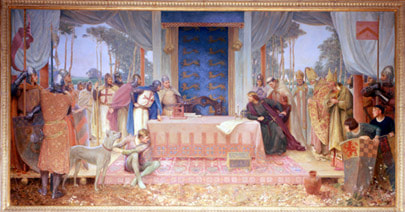
 RSS Feed
RSS Feed